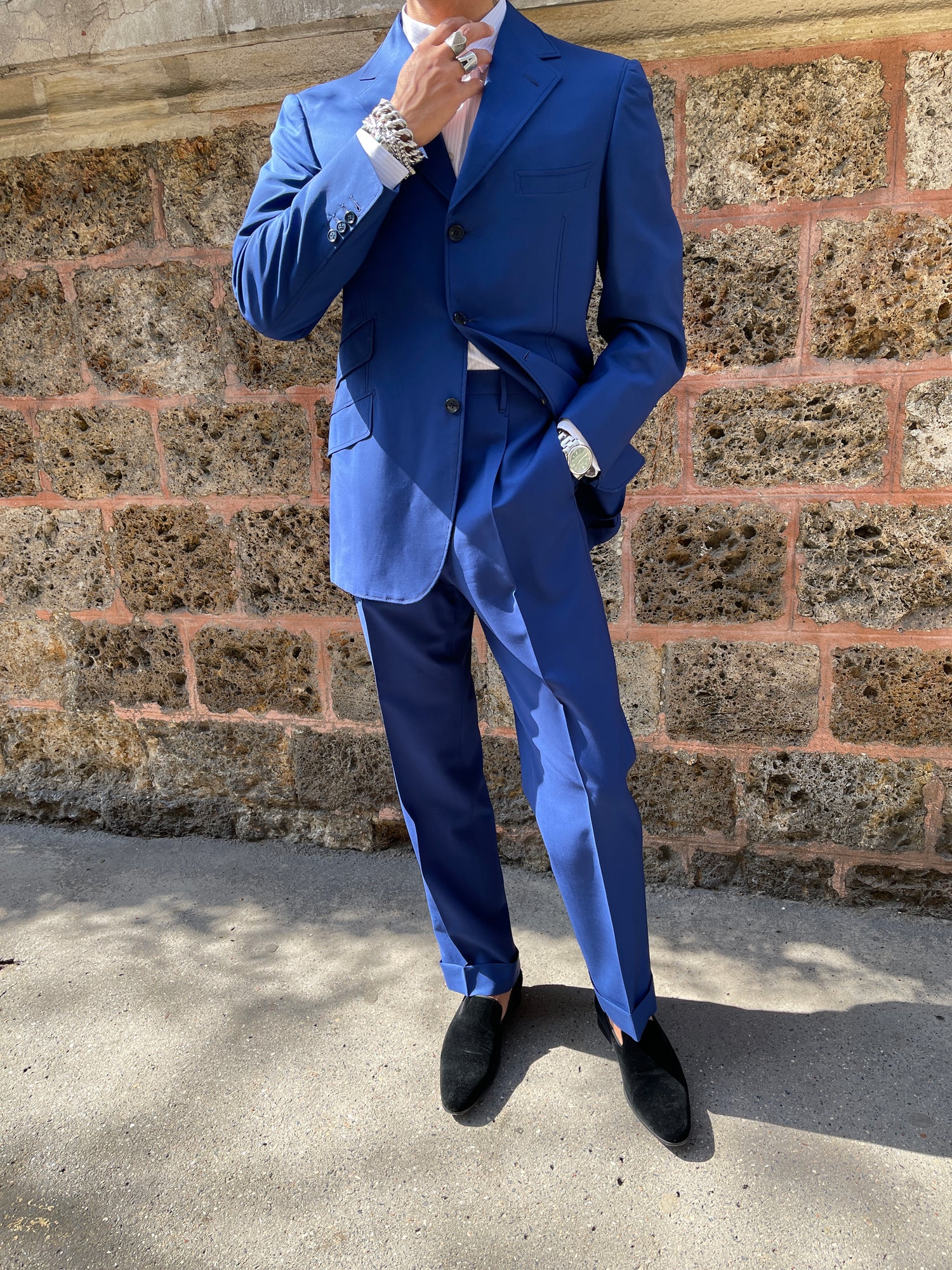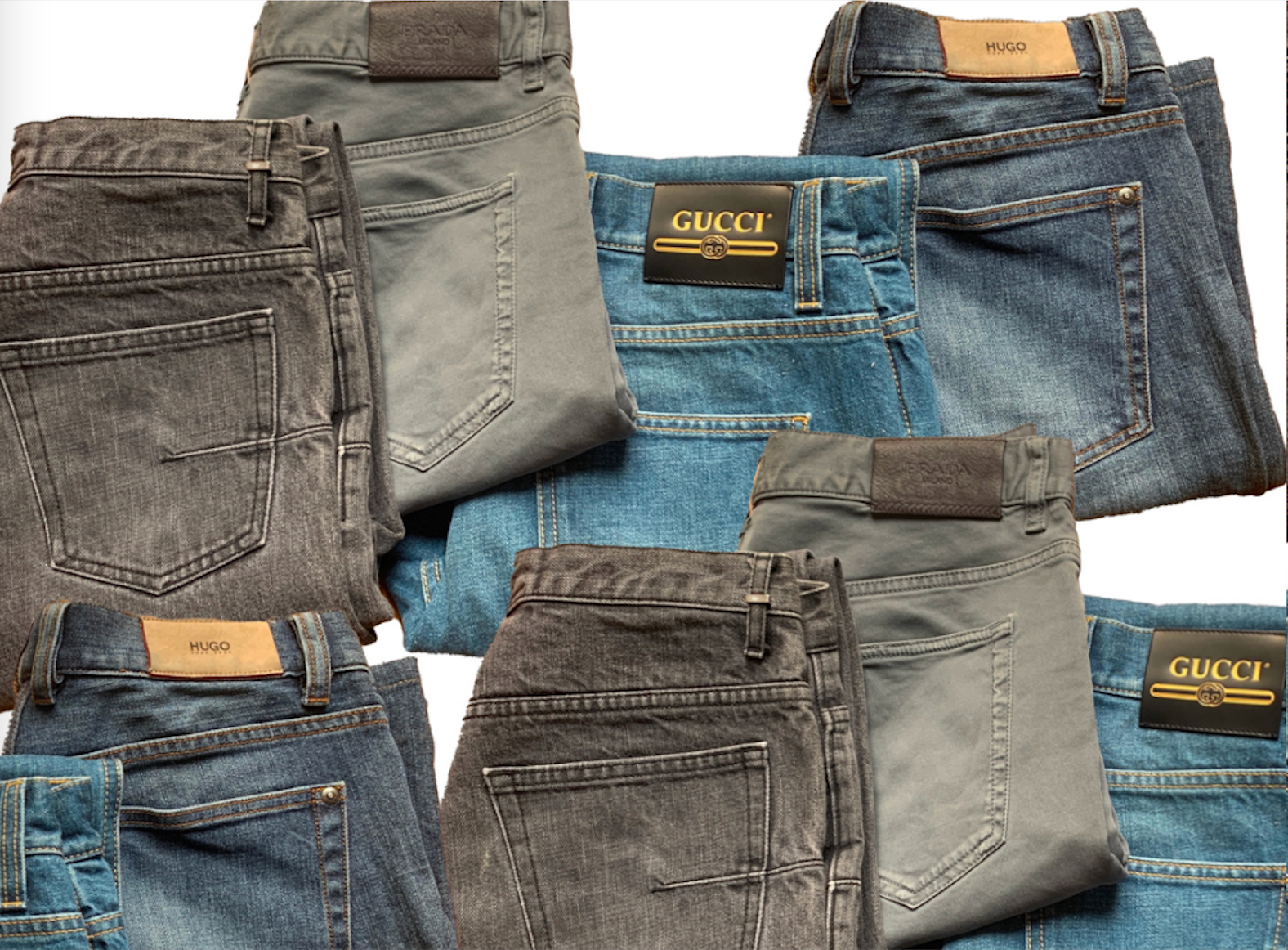For the average person, Gaetano Aloisio is not a well-known name. In the world of sartorialists, Gaetano Aloisio is a Master.
Finding, presenting and selling suits designed by the great man is a sure way to attract enthusiasts, experts in formal men's clothing, whose community can be found in a few Parisian boutiques, on a few blogs and on Instagram.
These are the first steps of the BEAU GUSTAVE in the world of "bespoke" ("made to measure" in English) and sartorialists ("Sartore" means "Tailor" in Italian), a world whose doors were opened thanks to a few pieces by the Maestro.
Essential knowledge when you are the first platform dedicated to second-hand men's fashion.

A tailor-made suit is not half-measure.
One of the pet peeves of sartorialists and men's tailors is fashion marketing. You can love marketing but understand it.
Indeed, today, "bespoke" is a hashtag without necessarily any reality, and the expression "half-measure" also generates its share of vagueness.
A tailor-made suit requires taking dozens of measurements, but today, advances in computer technology applied to tailoring, the automation of industrial cutting in textiles, and the transmission of data via the internet have led to a pseudo-democratization of tailoring expertise. Many brands and retailers now offer a service that involves having the customer try on a standard jacket and trouser template that closely matches their size, and then adjusting only the sleeve length and hem, in a choice of fabric. This service is often presented as half-measurement.
The gap between this pleasant but limited performance and a tailored suit is understandable, especially for men who carefully choose the width of a tie and the number of pleats in their trousers.
Of course, the price is commensurate with the difference: a tailor-made suit will never cost less than 7,000 to 10,000 euros. Well, first-hand...
The story of tailor-made is a bit like Erasmus before its time.
No one disputes the English paternity of tailoring know-how.
In the 1930s, the controversial but elegant Duke of Windsor was one of its great ambassadors: traveling around the Empire before his coronation, his double-breasted suits with chalky grey stripes attracted much attention.
But it was a tenor and composer in vogue at the time of Edward VII, Paolo Tosti, who is said to have developed the costume industry in Italy by sending his Savile Row-made suits to his family back in Ortona, in Abruzzo. By dismantling these suits to discover their mythical secrets, the anonymous Italian tailors are said to have perfected their craft. In the 1950s, the Peninsula had more sartori than England.
Today, (very) schematically, the bespoke suit for men falls into 3 schools: the British, square shoulder and structured cut, the French, with a softer shoulder and more ease, and the Italian, even more flexible, in terms of cut and fabric.
Within the Italian school, three schools coexist (Italy has not been a republic for very long): the Neapolitan, the Milanese, and the Roman. We will return to this subject a little later.
Gaetano with the Golden Scissors
We will also have the opportunity to delve deeper into the delicious world of refinement of the men's suit, its history, its tricks, its rites, but it is time to present further, El Maestro, Gaetano Aloisio.
While he may not have the popularity of (Francesco) Smalto or Cifonneli, the man has his enthusiastic fan club. Through the few articles devoted to him, we understand that he is a respected, discreet man committed to his craft. In particular, the defense of the term "bespoke" is close to his heart, as is that of craftsmanship and listening to his customers.
Born in Calabria, in the south of Italy, he began his apprenticeship at a very young age.
At 16, he headed north, arriving in Milan and working for Cesare Tosi, one of the city's most renowned bespoke tailors. After four years of experience, he moved to Rome and perfected his training (although in his case, the idea of constant improvement is still a relevant mantra). He opened his own Maison in 1991.
Thanks to his training, Gaetano single-handedly synthesizes the 3 Italian schools! Let's add that he is both a cutter AND a tailor. It is undoubtedly thanks to this very comprehensive training, this mastery of both technique and style that he does not claim a style of his own. On the contrary, in his eyes, imposing a style (his style) is almost incompatible with the idea of tailoring. His work as a tailor consists of making his clients as elegant as possible according to their taste, their lifestyle and their body shape.
“The inspiration of a tailor is his client,” he emphasizes on his website.
Such expertise is nevertheless expressed through a certain touch. Throughout the articles, we talk about the purity of the lines, the visual lightness of the cuts. Gaetano Aloisio's interlining is always hand-sewn and not machine-made, which partly explains why.
Personally, we were also struck by the extraordinary quality of the fabrics, and the finishing details – the slit that allows you to attach the first of the trousers! -.
Gaetano Aloisio received the “Forbici d'Oro” (Golden Scissors, the highest distinction possible in his profession) in 1986 and was honored by the President of the Italian Republic for his contribution to Italian fashion in 2011.
We don't know him, but this exciting little anecdote definitely makes us like him: when we published our first Instagram post about a magnificent Aloisio Prince of Wales cashmere suit that we had received on deposit, we tagged the Master.
To our great joy, he replied: "I think I made this costume about twenty years ago." And that was exactly it. What a testament to the man's dedication and the uniqueness of his work!
One person's custom-made item can become another person's unique (or custom-made) piece.
We will devote other articles to tailoring know-how, to its details that make the difference with certainty but without ostentation. In this matter, when the author of these lines remembers that six months ago, real sleeve buttonholes were the alpha and omega of the subject, he measures the distance traveled.
But while no one can deny that this artistic craft has a cost, not everyone wants to spend 7,000 to 10,000 euros on a suit, or 1,000 euros on a pair of trousers.
And this is where second-hand opens up joyful prospects! A good retoucher will know how to do just about everything on a suit, whether it's made to measure or not: enlarging the generous reserves of hem fabric, reducing, refining, lengthening, shortening and even reworking the shoulders, etc.
Aside from the number of buttons on jackets and within reason in terms of size variation, custom-made is inherently long-lasting and therefore adaptable. It's in its genes. Since we started offering these pieces, we've seen this happen 20 times.
Tailor-made clothing allows you to dress tailor-made without paying the price.
Here we will only talk about durability and sustainability. Without forgetting an essential concept in fashion: enjoying being at your best.
Finally, some facts:
- A tailor-made suit represents a minimum of 60 hours of work, and several fittings.
- In 2009, Savile Row tailors took the Advertising Standard Authority (whose mission is easily understood) to court the following definition of the term "bespoke": The ad hoc creation of a 100% original pattern, entirely handmade and several fittings. They were dismissed on the grounds that the term had slipped into other meanings and, furthermore, that "no one buying this type of product at affordable prices expects a product that is completely handmade."
- Quality control is a key factor in the outcome of a custom-made suit, and therefore, by extension, the size of the workshop: if it doesn't have enough permanent staff, resorting to external subcontractors can compromise the consistency of the service. Sometimes it's very good, sometimes less so. If you're going to break the bank, you might as well guarantee the result.
- Maison Charvet (which we will have to come back to one day) offers between 6,000 and 7,000 different fabrics for the production of its custom-made shirts.
- “ Give me a man who makes the tailor, not the tailor who makes the man” (Lord Brummell).
Find our costumes by clicking here !
Thanks to the archives of Les Echos, the blogs Parisian Gentleman, art of style, and Permanent Style and to the Master himself for teaching us so much.



